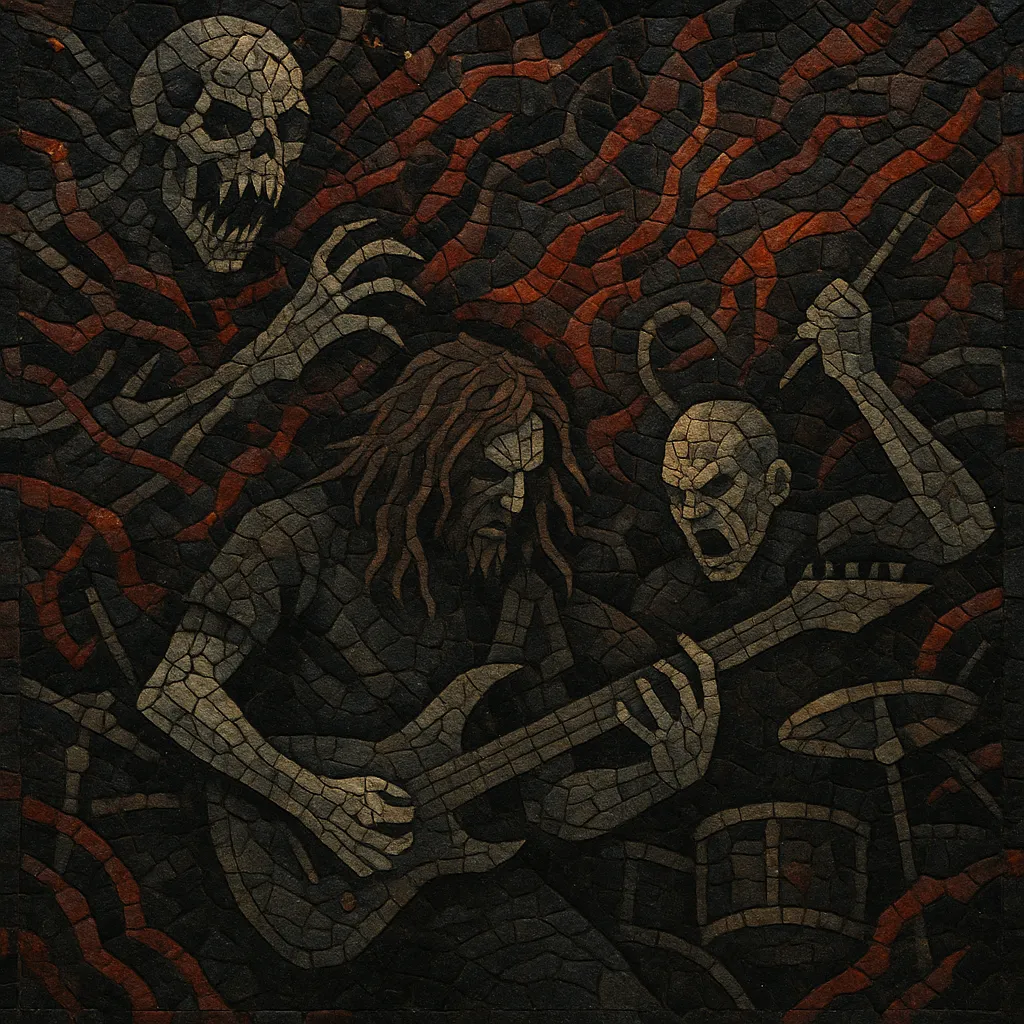Technical death metal (often shortened to tech-death) is a virtuosic, hyper-detailed branch of death metal characterized by complex song structures, rapid-fire tempo changes, and high-performance musicianship. It fuses the extremity and heaviness of death metal with the rhythmic sophistication of progressive metal and the harmonic vocabulary of jazz fusion.
Signature elements include odd and shifting time signatures, polyrhythms, dissonant and chromatic harmony, through-composed or non-repeating structures, and intricate contrapuntal interplay between guitars and bass (often fretless). Drumming emphasizes precision blast beats, rapid double-kick patterns, metric modulation, and constant subdivision changes. Vocals are primarily deep growls or harsh screams, while lyrics frequently explore science, philosophy, metaphysics, and cosmology alongside the genre’s traditional dark themes.
Production tends to favor clarity and separation to make dense arrangements intelligible, with tight, gated guitars, articulate bass presence, and drum sounds that capture transient detail. The result is aggressive, cerebral, and often breathtakingly technical music that rewards close listening.
Technical death metal crystallized at the tail end of the 1980s as death metal bands began embracing the complexity of progressive metal, jazz fusion, and advanced metal guitar techniques. The Florida scene (centered in Tampa) and parallel movements in the Netherlands and Canada proved pivotal. Albums by Death (from Spiritual Healing through Human and Symbolic), Atheist (Piece of Time, Unquestionable Presence), Cynic (Focus), Pestilence (Testimony of the Ancients, Spheres), Nocturnus, and later Gorguts established a vocabulary of odd meters, chromatic/dissonant harmony, and through-composed form that set tech-death apart from its brutality-first peers.
As death metal diversified, technical approaches evolved in different directions. Canadian innovators like Gorguts pushed extreme dissonance and atonality, while U.S. and European acts developed greater precision and neoclassical shred techniques. The style remained underground but influential, setting the stage for a 2000s revival with improved recording technology and global scenes.
The 2000s brought a wave of highly technical groups—Necrophagist’s crystalline riffing and surgical production became a template, inspiring bands such as Obscura, Spawn of Possession, Decapitated, and Origin. Quebec’s scene (e.g., Beyond Creation) emphasized fretless bass counterpoint and lush, modern production. Bands blended tech-death with brutal death, progressive metal, and later djent/modern rhythm design, accelerating the genre’s technical arms race.
In the 2010s–2020s, acts like Archspire, Beyond Creation, and others elevated speed, precision, and rhythmic extremity to new heights, aided by advanced recording tools, extended-range instruments, and rigorous practice methods. Tech-death today spans dissonant and abstract variants, neoclassical-influenced shred, and groove-forward strains, but remains unified by its emphasis on complexity, virtuosity, and intensity.


